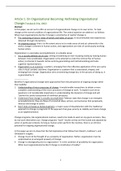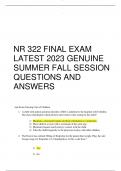Samenvatting
Summary articles organizational change
- Instelling
- Radboud Universiteit Nijmegen (RU)
Summary of all mandatory articles of the course organizational change of the master Organizational Design and Development. Contains the following articles: Tsoukas, H. & Chia, R. (2002). On Organizational Becoming: Rethinking Organizational Change Plowman, D. etc. (2007). Radical Change Accidentall...
[Meer zien]





